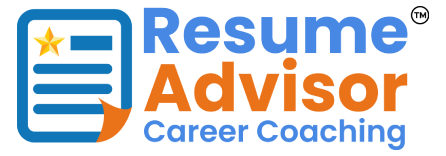Resume-building can be one of the most difficult challenges in your legal career, excluding the grueling first year of law school of course.
Creating a resume isn’t in and of itself a challenging experience relative to the briefs, case studies, argumentation theory, and juror-selection processes that you’ll have to work with for the rest of your career. However, you have extensive training in these other areas.
When it comes to resumes, you’re entirely on your own.
In fact, J.D. Houvener, a San Francisco patent attorney, has said that creating an attractive resume was “one of the largest hurdles I faced when beginning my career.”
Hopefully your university’s business or career center can help you build the best resume. If not, however, or if you’re just looking for some complementary information, keep reading below for a suite of sweet tips and tricks to craft the highest-quality resume for the field of patent law.
Hire a Graphic Designer
In the end, the resume is all about the content. Whether or not an employer chooses your resume for the interview process out of the other hundreds of applicants is based primarily on their perceptions of your resume. This means that poor content leads to poor results.
That said, you’re probably not an underachiever. After all, since when do underachievers take time out of their days to research how to build the perfect resume?
By hiring a graphic designer to make your resume look as nice as the information that its presenting, you significantly increase your chances of having your resume noticed.
Employers are attracted to eye-catching resumes just as other people are attracted to eye-catching fliers. The same principles are at work in both situations. It just comes down to how the designer presents your information.
Of course, don’t overdo it. Make sure to hire a good graphic designer or else you might end up with a gaudy eyesore that hiring managers and attorneys can’t stand to look at.
Properly Organize Your Items
When you’re applying for new positions, particularly in the field of law, the factor that has the biggest influence on your candidacy tends to be your employment history. If you have an internship under your belt, perfect! Make sure to draw attention to that in your summary and your cover letter as well.
As with any list, the most important items go at the top and work their way down to the least relevant at the bottom. Of course, this is not to say that you should fluff your resume with unimportant junk just to fill up the page. In fact, that couldn’t be further from the truth.
The less you have on the page, the more what you do have shines. Make sure to keep each section succinct and straight to the point without sacrificing readability.
Keep your summary or mission statement near the top of the page, just beneath the header sections. Immediately below that, include your work history. The second most important aspect influencing your candidacy is your education history.
Familiarize Yourself with the Patent Process
One of the most important things you can do in order to make your resume stand out is to familiarize yourself with the patent process and the question of how to patent an idea. While this will play its biggest role in helping you draft your cover letter, a good cover letter requires a good resume to catch the eye.
When you consider that your cover letter is supposed to call attention to the key elements of your resume, you can begin to understand the importance of highlighting your knowledge of patent law in your resume.
After all, how can your cover letter refer back to the information in your resume that covers your extensive knowledge of patent law if you haven’t included anything in your resume that showcases this information?
Create a Specialized Resume
Under no circumstances should the resume that you’re sending to patent attorneys be the same as the resume you’re sending to other jobs. For a discipline as specialized and peculiar as patent law, you need an equally specialized and peculiar resume.
If you’re just graduated from law school at a young age, however, this can be quite difficult to come by, as you most likely do not have anywhere near the bulky employment history, certifications, or professional awards that older applicants might possess.
One way or another, the general gist of this strategy remains the same: only include the information that is most relevant to this position. If you have experience in software design, list it. If you have experience as a professional wrestler, leave that for the water cooler.
Conclusion
While graphic design, proper organization, a technical familiarity with the subject, and a specialized format can help your resume shine, whether or not you pass along into the interview stage or into the “out” folder depends primarily on your content.
While you’re creating your resume and writing your cover letter, make absolutely certain to keep the interview in mind. Write each line as if you were interviewing in the moment. In fact, practice responding to interview-style questions as if you were asked about every single word on the page.
Not only will this practice help you craft the best-looking and most relevant resume possible by narrowing down which parts don’t really make sense for a patent lawyer position, it will also help you prepare for any and all possible questions.
At the end of the day, the resume is all about the spin. Contact us today for a free consultation.

